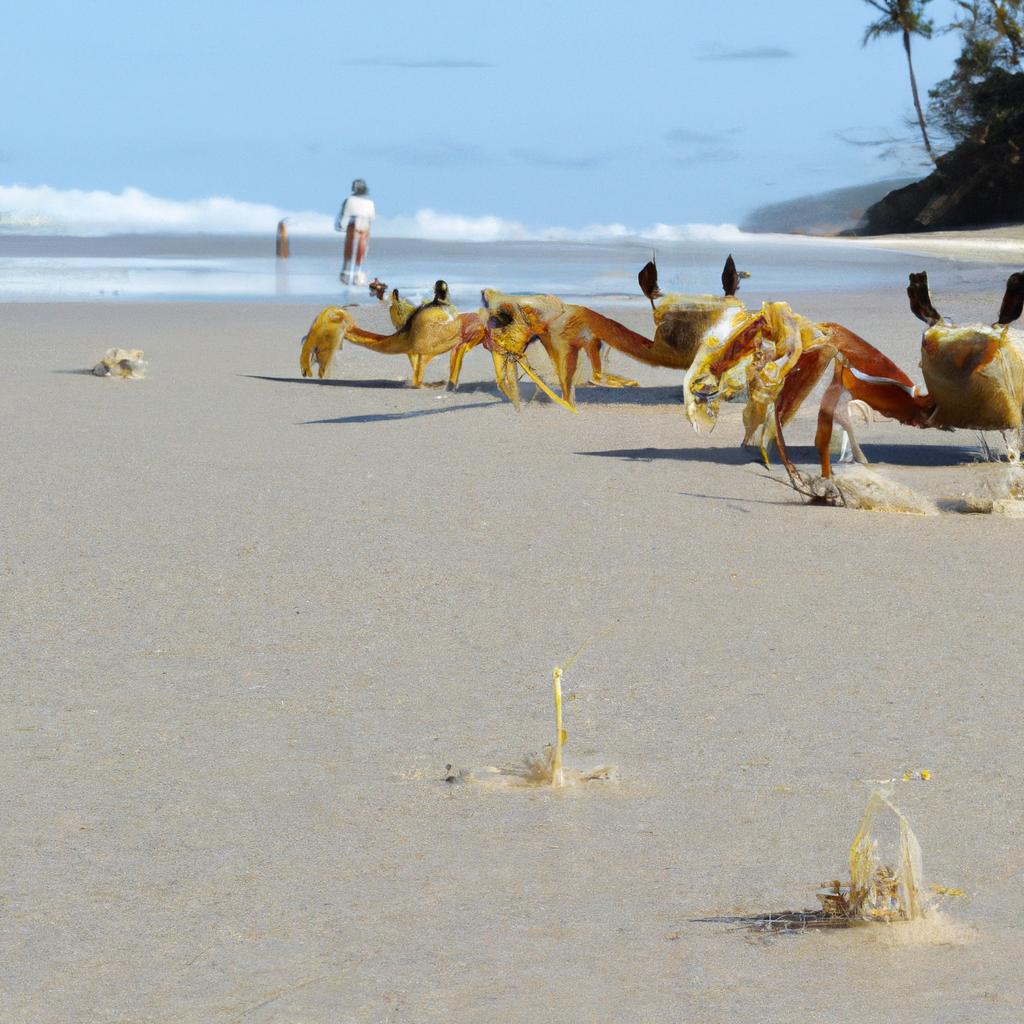Have you ever been captivated by the amazing migration of crabs? In Australia, crab migration is a spectacle that captures the hearts of nature lovers and researchers alike. It’s a remarkable event that takes place annually and plays a vital role in maintaining the ecosystem. Let’s dive deep into the world of Australia’s crab migration, exploring its significance, its impact on the environment and economy, its relation to climate change, and more. So, grab your binoculars and let’s embark on this incredible natural wonder together!
What is Australia’s Crab Migration?
Australia’s crab migration refers to the annual movement of crabs from their habitats to breeding grounds or other locations. These crustaceans travel in large numbers, covering considerable distances. This event attracts researchers and nature enthusiasts from around the world. One of the most famous migrations is the Christmas Island red crab migration occurring between October and December. Millions of red land crabs move from the forest to the coast to breed. Another notable migration is that of the blue swimmer crabs in Western Australia, which takes place between November and January.
Reasons Behind Crab Migration
Crab migration occurs for various reasons. One of the primary motivations is breeding, as crabs need to relocate to specific areas to mate and lay eggs. Other factors contributing to crab migration include changes in food availability, variations in water temperature, and the need to escape from predators or unfavorable conditions. Understanding these reasons is crucial as they help us appreciate the significance of this event in maintaining the ecosystem’s balance. Witnessing how these creatures navigate their way to find new habitats is a true testament to nature’s resilience.
The Impact of Crab Migration on the Environment
Crab migration has both positive and negative effects on the environment, and it’s important to examine both sides of the story. Let’s delve into the impact of this migration.
Positive Effects of Crab Migration
Crab migration plays a vital role in Australia’s coastal ecosystems. As crabs move from one location to another, they distribute nutrients and organic matter across vast distances. This process is essential in maintaining the overall health of the ecosystem. Additionally, crab migration helps mitigate the impact of overfishing by providing a valuable food source for other marine animals.
Negative Effects of Crab Migration
While crab migration is crucial to the ecosystem, it can also have negative effects. When crabs migrate in large numbers, they can cause significant damage to vegetation in their path. This damage leads to the loss of habitat for other species, soil erosion, and reduced water quality. Moreover, crab migration can pose a threat to human safety when crabs cross roads and highways.
Steps Taken to Manage the Impact of Crab Migration
To manage the impact of crab migration, various measures have been implemented. Temporary road closures during peak migration periods have been put in place to reduce the risk of accidents. Researchers are diligently studying the impact of crab migration on the environment to develop strategies that mitigate negative effects. These strategies involve monitoring crab populations, protecting critical habitats, and fostering sustainable fishing practices.
The Economic Impact of Crab Migration
Crab migration is not only a captivating natural wonder but also a significant contributor to the Australian economy. The fishing industry, in particular, heavily relies on this event. Let’s explore the economic impacts of crab migration.
Importance of Crab Migration to the Fishing Industry
Australia’s fishing industry is globally renowned. Crab fishing, in particular, significantly contributes to the country’s economy. The migration of crabs provides a substantial boost to the industry, presenting a unique opportunity for fishermen to catch more crabs.
Benefits and Drawbacks of Crab Migration to the Economy
Crab migration also has a broader impact on the economy. In certain areas, tourists flock to witness this incredible phenomenon, giving a significant boost to the local economy. However, the migration event can also cause road closures and disruptions, negatively affecting local businesses.
The Role of Government in Regulating Crab Migration
The Australian government plays a pivotal role in regulating crab migration. Recognizing the event’s significance to the fishing industry and the overall economy, it’s crucial to manage it sustainably. The government collaborates closely with fishing communities to ensure appropriate regulations are in place, minimizing the impact on the environment and local communities.
Crab Migration and Climate Change
As the world faces the challenges posed by climate change, it’s crucial to understand how this phenomenon affects the migration patterns of crabs. The relationship between crab migration and climate change is complex, but one thing is clear: climate change has a significant impact on these crustaceans.
The Relationship Between Crab Migration and Climate Change
Climate change affects various factors that influence crab migration, including temperature, rainfall, and sea level. These changes disrupt the timing and duration of crab migration, upsetting the delicate balance of the ecosystem and impacting the economy.
The Impact of Climate Change on Crab Migration
One of the significant impacts of climate change on crab migration is the alteration of breeding cycles. Warmer temperatures cause crabs to breed earlier, resulting in a reduction in the number of offspring produced. Rising sea levels can flood breeding grounds, leading to habitat loss and a decline in crab populations.
Strategies to Mitigate the Effects of Climate Change on Crab Migration
To mitigate the impact of climate change on crab migration, several strategies can be employed. Reducing greenhouse gas emissions, protecting breeding grounds and crab habitats from the effects of climate change, and establishing research and monitoring programs are crucial steps. These efforts enable us to better understand the impact of climate change on crab migration and develop effective strategies to mitigate its effects.
In Conclusion
Australia’s crab migration is a breathtaking event that showcases the grandeur of nature. It plays an indispensable role in maintaining the ecosystem and has a significant impact on both the environment and the economy.
We’ve explored how crab migration can have positive and negative effects on the ecosystem, emphasizing the importance of managing its impact. The fishing industry greatly benefits from the migration of crabs, but it’s essential to regulate fishing practices to prevent overfishing.
Furthermore, we’ve uncovered the complex relationship between crab migration and climate change. Although climate change poses challenges, with the right strategies, we can help mitigate its effects and ensure the long-term survival of this incredible natural phenomenon.
Thank you for joining me on this fascinating journey of discovery. I hope you’ve gained new insights into Australia’s crab migration. Remember to stay tuned for more captivating content from TooLacks, your go-to source for all things nature, gardening, and animals. To learn more about TooLacks, visit TooLacks.



